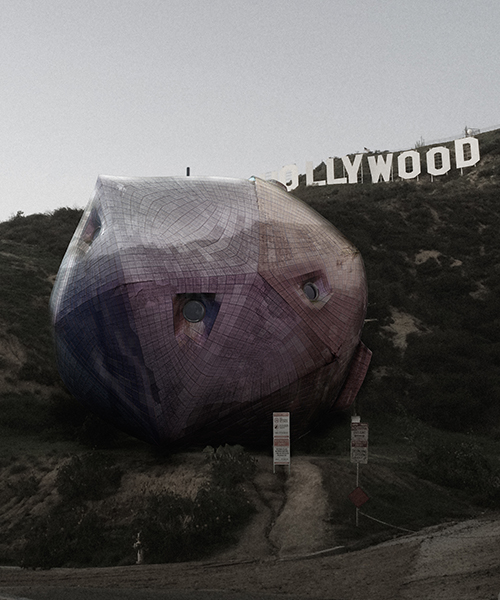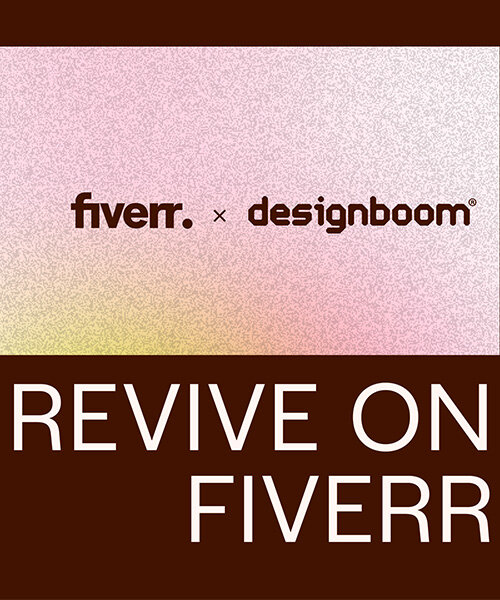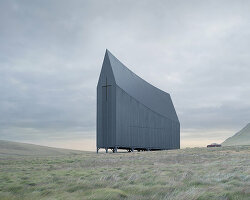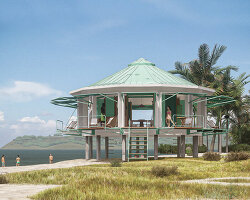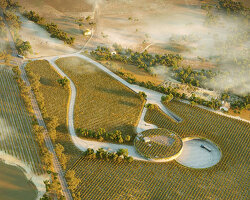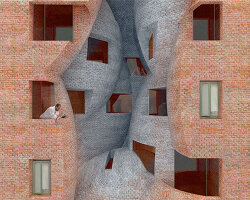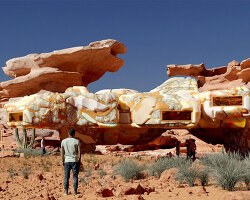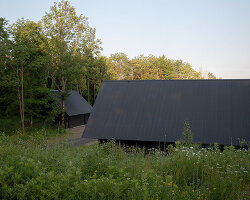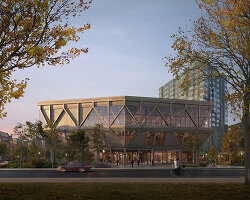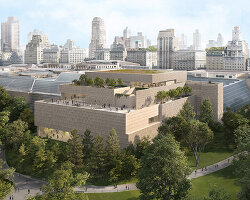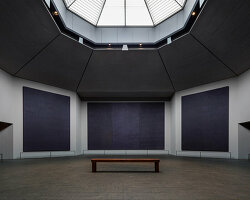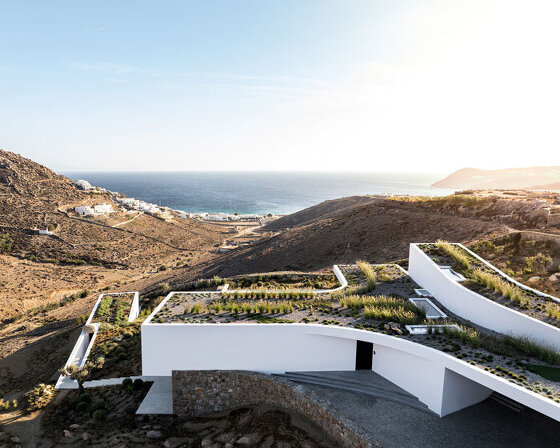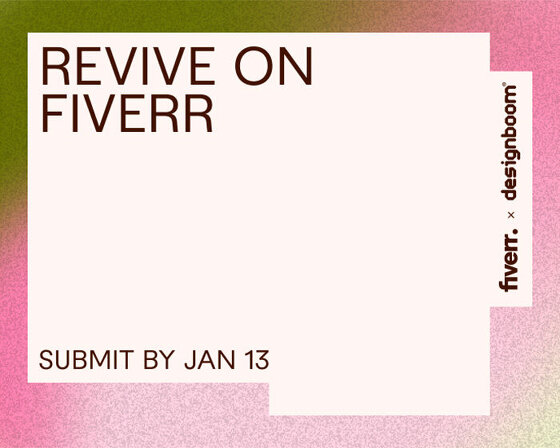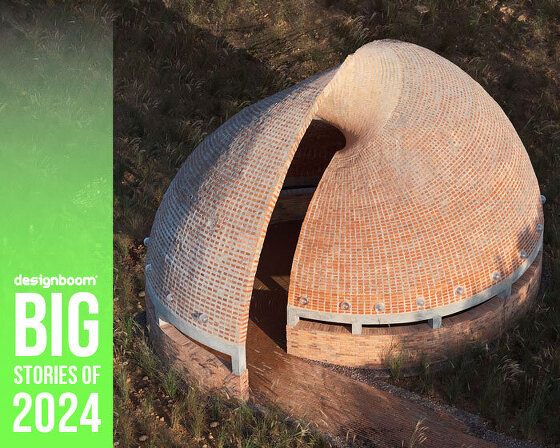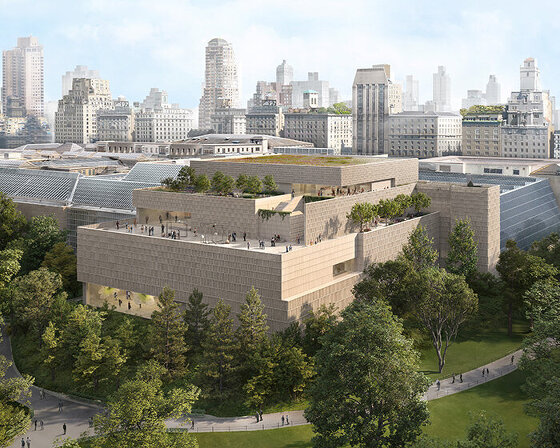architectural research initiative arch out loud partners with ‘last house on mulholland’ to host the hollywood design competition, receiving 500 participants worldwide. the project invites designers to envision a home of the future with innovative use of technology and integrative environmental strategies, while also capitalizing on the iconic prominence of the site. indeed, it is located on an empty plot directly beneath the iconic hollywood sign on the mulholland highway of los angeles — where the last house sits in an empty plot. the famous signage has long served as a symbol of celebrity glamour and entertainment but for many, the sign also evokes the hopes, dreams and aspirations of american culture. hence, this quality gives great prominence to the project which proposes positive solutions to future housing.

the ambivalent house by hirsuta is a spheroid floating low to the ground on a single column
the winning proposal for the hollywood arch out loud competition is the ‘ambivalent house’ by LA-based architecture studio hirsuta, designed as a spherical futuristic body extruding from the hill. as technology continues to impact daily life, social customs and living patterns will evolve, too. climate change, rising sea levels and water scarcity are forcing professionals and consumers to think about domestic lifestyles differently. therefore, this house pushes hard on the envelope of experimental residential design. a spheroid floating low to the ground on a single column, the form is the inexact offspring of more geometrically perfect round houses already achieved. it slowly rotates too, perhaps over the course of a year or more. in this way, the residence’s many faces continually recombine visually to produce new profiles and elevations — like an ever-changing, ambivalent object.
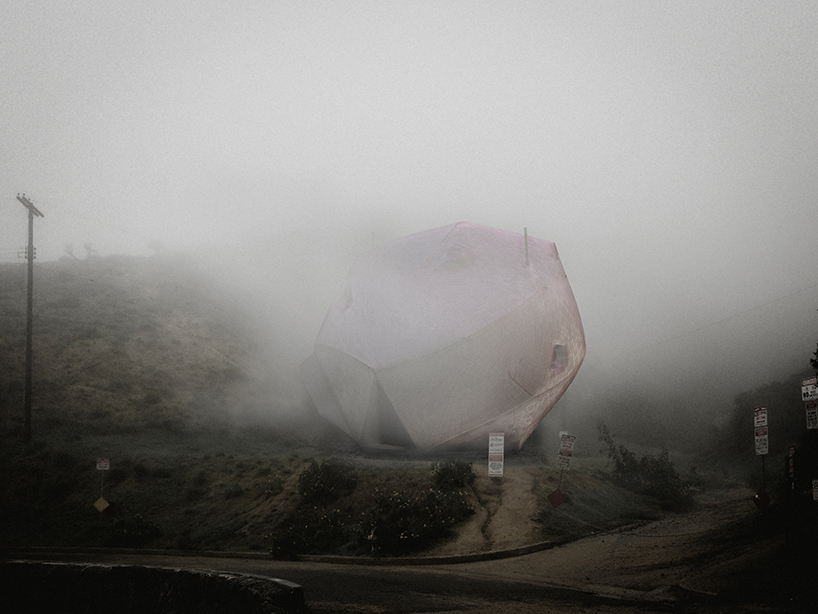
the design embraces the feral quality of the hollywood landscape, making little attempt to tame it
the ambivalent house embraces the feral quality of the hollywood hills and makes very little attempt to tame it. quite few landscapes resemble this one, at least in categorical terms: not quite beautiful or even picturesque, and not sublime either except under unusual meteorological conditions. there is a certain brazenness that mixes signposts and infrastructure with rocks and shrubs so that each, somehow, becomes equal to the other like a flat ontology of things. however, the design must be a thing apart from the existing elements; for it to stand among them, it has to be an entity completely by itself.

the majority of the external building skin is clad in photovoltaic film, flexible and panelized
most of the external building skin is clad in photovoltaic film, flexible and panelized. wrapping the entire form maximizes solar exposure and integrates its energy system into the house via primary ways: in other words, it becomes the envelope. integral to the architecture itself, the photovoltaic surface takes on aesthetic responsibility. the iridescence, play of colors and reflectivity across elevations add another dimension to the rotating effects happening simultaneously yet slowly. also, photovoltaic film appears as both reflective and absorptive — lending a certain ambivalence to concavities and convexities of the surface. similarly, some regions of the skin are transparent photovoltaic film, allowing for views out through the surface
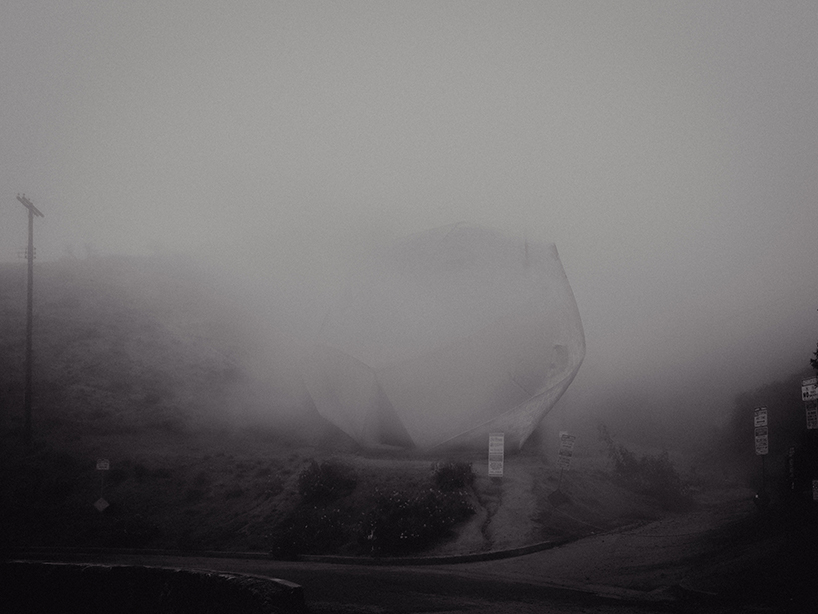
the house must be apart from other things, in order to stand among them
a progenitor of this building, richard foster’s round-house (I 968) rotates on a ball bearing system between 5 and 26 times per day, depending upon the occupant’s desires. a similar system is imagined here to create even slower rotation. actual, live movement would not be discernible to the senses at all, instead only to memory and habit. were the rate of turns not coincided with seasonal change, the house would renwe its visage endlessly on the same day. a stop-motion rotation through 15 moments shows a shifting aspect from any given point outside of the building. each face is both similar and different to the other at the scales of both panel and profile, lending an eerie self-similarity to the house’s faciality.

stop-motion rotation through 15 moments shows a shifting aspect to the building view
at the base, a mechanical room can be found with a large sculptural foundation. utilies tied to the urban grid such as water, waste and gas, run through the fixed core, while electricity may be off-grid and relies solely on power generared by the building’s photovoltaic-skin. on the first level, the layout of the entry floor organizes around centrifugal and centripetal directions — ambivalent to any single mode of occupation. with just one enclosed room outside of the core and in contrast to the stronger lines of the first level, the second floor is wide open. surrounding and overhead views are crossed by the constellation of structural geometry that forms the uppermost third of the spheroid. finally, a simple indentation of two of the uppermost faces of the envelope forms a roof terrace that doubles as a room.

mechanical room – electricity may be off-grid, relying on power generated by the building’s photovoltaic skin

level one – organized around centrifugal and centripetal directions, ambivalent to any single mode of occupation

level two is wide open, overhead views are crossed structural geometry forming the spheroids’ top
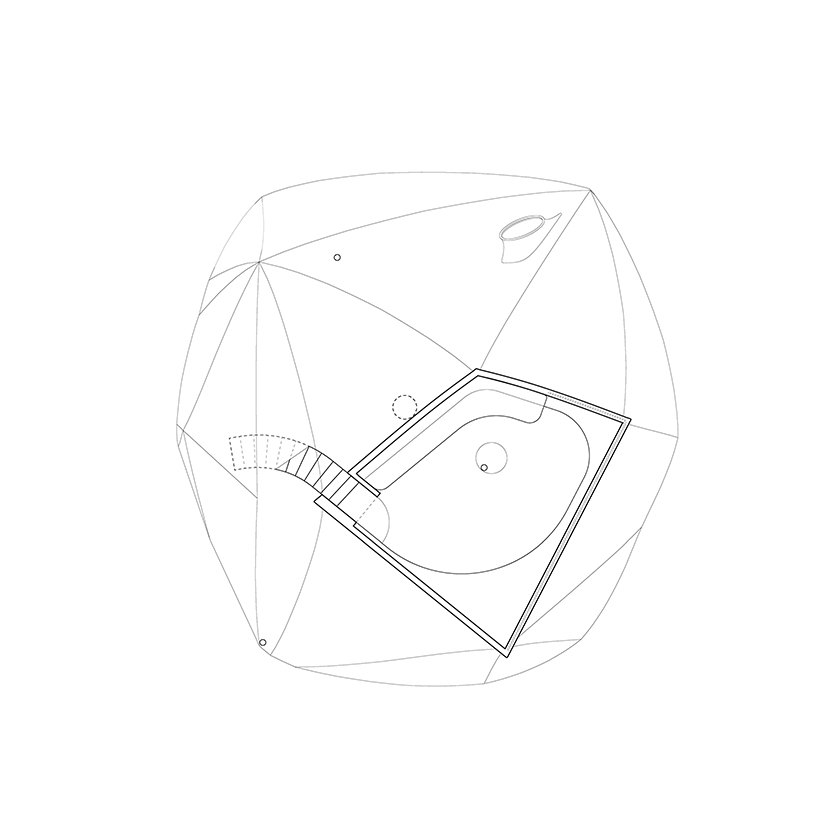
roof terrace – simple indentation of the envelope forms both roof and room

the proposal pushes hard on the envelope of experimental residential design
project info:
winning entry
project name: AMBIVALENT HOUSE
architectural office: hirsuta
participants: jason payne, michael zimmerman, joseph giampietro, ryosuke imaeda
competition organizer: arch out loud
site owner: steve alper
designboom has received this project from our ‘DIY submissions‘ feature, where we welcome our readers to submit their own work for publication. see more project submissions from our readers here.
edited by: lea zeitoun | designboom
